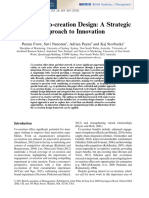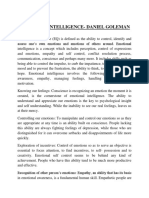0% found this document useful (0 votes)
38 views9 pagesCo Creation
Co-creating value with customers is a strategic marketing approach that enhances product development through collaboration, leading to better customer satisfaction and loyalty. While it offers benefits like improved financial performance and innovative ideas, it also carries risks such as loss of control and ethical dilemmas. Effective management of co-creation involves clear communication, strategic planning, and leveraging customer insights to foster mutual value.
Uploaded by
animeshgahlodofficailCopyright
© © All Rights Reserved
We take content rights seriously. If you suspect this is your content, claim it here.
Available Formats
Download as DOCX, PDF, TXT or read online on Scribd
0% found this document useful (0 votes)
38 views9 pagesCo Creation
Co-creating value with customers is a strategic marketing approach that enhances product development through collaboration, leading to better customer satisfaction and loyalty. While it offers benefits like improved financial performance and innovative ideas, it also carries risks such as loss of control and ethical dilemmas. Effective management of co-creation involves clear communication, strategic planning, and leveraging customer insights to foster mutual value.
Uploaded by
animeshgahlodofficailCopyright
© © All Rights Reserved
We take content rights seriously. If you suspect this is your content, claim it here.
Available Formats
Download as DOCX, PDF, TXT or read online on Scribd
/ 9
























































































